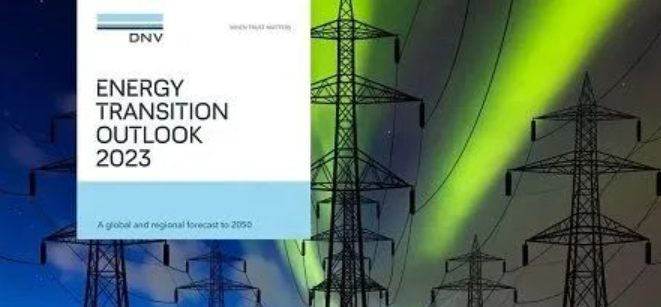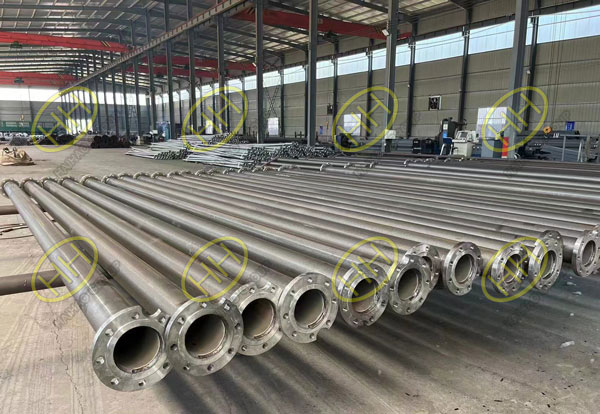DNV’s 7th edition of “global energy transition outlook” unveils insights: Fossil fuels still dominate new energy landscape
August 2023 – Leading global assurance and risk management firm, DNV, has recently released the highly anticipated seventh edition of its “Global Energy Transition Outlook.” This comprehensive report offers valuable insights into the ongoing shift in the world’s energy landscape.
Despite the remarkable growth in renewable energy capacity over the past five years, the report indicates that fossil fuels continue to satisfy half of the world’s burgeoning demand for new energy. Notably, fossil fuels accounted for 51% of the increased energy demand from 2017 to 2022. While renewable energy is growing to meet escalating needs, it falls short of replacing fossil fuels entirely, and the absolute supply of fossil fuels is still on the rise.
Efforts to limit global warming to 1.5°C face unprecedented challenges. The DNV report highlights that achieving the targets set in the Paris Agreement requires a 50% reduction in carbon dioxide emissions by 2030. However, DNV’s projections suggest that even by 2050, this ambitious goal may remain unattainable. Predictions indicate only a 4% reduction in CO2 emissions by 2030 and a substantial 46% reduction by the mid-century. Alarmingly, carbon dioxide emissions associated with energy are expected to peak in 2024, marking a pivotal moment in the global energy transition.
Remi Eriksen, President and CEO of DNV Group, emphasizes the global nature of the energy transition, stating, “If we define the transition as the absolute replacement of fossil energy with clean energy, then the energy transition has not yet begun on a global scale.” While the transformation is underway at the industry, national, and community levels, record-breaking emissions from fossil fuels remain a looming concern for the coming year.
The report underscores the heightened significance of energy security as a driving factor in energy policies, influenced by shifts in geopolitical dynamics. Governments worldwide are willing to pay premiums for locally sourced energy, significantly impacting energy outlooks. For instance, the anticipated slowdown in India’s transition is expected to increase the proportion of coal in its energy mix. Conversely, Europe is experiencing an acceleration in its energy transition driven by unified climate, industry, and energy security objectives.
Although the transition has not reached full fruition, renewable energy is poised to surpass fossil fuels once it gains momentum. From now until 2050, the majority of new energy will be derived from wind and solar sources, projected to grow ninefold and seventeenfold, respectively. This surge in capacity is expected to double electricity generation, enhancing the efficiency of global energy systems. Currently dominated by an 80/20 ratio of fossil to non-fossil energy sources, this balance is predicted to shift to 48/52 by the mid-century.
The year 2022 witnessed a groundbreaking milestone with solar energy installation capacity reaching 250 GW. Despite short-term challenges such as inflation and supply chain disruptions, DNV anticipates that wind energy will constitute 7% of globally interconnected electricity by 2030, doubling its installation capacity. However, limitations in transmission and distribution grids pose a significant bottleneck for renewable energy expansion, especially in regions like North America and Europe, hindering the growth of distributed energy assets such as grid-connected storage and electric vehicle charging stations.
Eriksen concludes, “Despite short-term setbacks due to rising interest rates, supply chain challenges, and energy trade shifts resulting from the Russia-Ukraine conflict, the long-term trend remains clear. In the span of just one generation, the global energy system is expected to transition from an 80% fossil fuel structure to approximately 50% non-fossil energy. While this shift is rapid, it still falls short of meeting the goals of the Paris Agreement. Ahead of the 28th Conference of the Parties, DNV will release ‘The Path to Net Zero Emissions,’ highlighting that the primary challenges lie not in technology but in the lack of incentives to drive the rapid deployment of renewable energy and energy storage, as well as the absence of measures to curb fossil fuel emissions.”
As an integrated supplier of supporting products for pipeline systems, Haihao Group pays close attention to the global energy landscape. Nowadays, Haihao Group’s pipe fittings products have been widely used around the world. Whether it is traditional energy sources such as oil and gas pipelines or new energy sources such as wind power and nuclear power, there are usage scenarios for our pipe fittings products. If you have related projects and need our help, please Contact us anytime for solutions.




